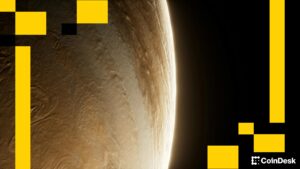Bitcoin Plasma (XPL) has emerged as one of the most closely watched blockchain projects in 2025, drawing significant attention from both retail and institutional investors. What is Plasma? Plasma XPL is a purpose-built, EVM-compatible Layer 1 blockchain engineered specifically for stablecoin payments. Its design goal is to let users move stablecoins (e.g. USDT) quickly, with low latency, and in many cases with zero fee for basic transfers. The network is secured via a variant of Byzantine Fault Tolerant consensus (PlasmaBFT), and it draws legitimacy and stability from backing by major organizations in the crypto space. At launch, Plasma claimed throughput exceeding 1,000 transactions per second and block times under 1 second, placing it in the high-performance class of blockchain systems. It is also backed by prominent names in industry and finance, such as Tether/USDT, Bitfinex, Founders Fund, and others. Recently, Plasma has quickly become a focus of market FOMO thanks to several notable signals. At launch, the network attracted more than $2 billion in stablecoin liquidity, and within just two days the stablecoin supply on Plasma exceeded $7 billion, reflecting unprecedented capital inflows. Trading volume surged by over 300,000% in 24 hours, driving the price up by 50–85% within a single day. In just 2 days, stablecoin supply on Plasma has surpassed $7 billion. The future is bright. pic.twitter.com/uD3Dgs6e9i — Plasma (@Plasma) September 27, 2025 Only 1.8 billion XPL , were circulating at launch, creating scarcity that fueled speculation. Large investors reportedly committed tens of millions in USDT during early sales, reinforcing the narrative of strong whale interest. Binance listed XPL immediately, distributing 75 million tokens through a HODLer airdrop and reserving an additional 200 million tokens for future marketing campaigns. Together, these factors positioned Plasma as a prime “gem hunting” target, though they also highlight the risks of hype-driven volatility and upcoming token unlocks. What Does Plasma Solve? First, fee friction: On networks such as Ethereum or BNB Chain, users need to have a small amount of gas tokens in their wallets to pay for gas fees. In some cases, it causes inconvenience for new users. Plasma addresses this issue through a paymaster mechanism. This design allows basic USDT transfers to be executed with no direct fee for the end user, thereby removing the dependency on holding native tokens and making stablecoin payments more efficient. Second, latency and finality: many existing chains have trade-offs between throughput and finality (time to irreversible confirmation). Plasma’s consensus (PlasmaBFT) is designed to allow fast finality in seconds. Third, user experience and onboarding: users unfamiliar with crypto don’t want to manage multiple tokens just to send stablecoins. By allowing custom gas token support (users may pay gas in stablecoins or other approved ERC-20s), Plasma reduces cognitive overhead. Source: Plasma Fourth, scaling payment flows: stablecoin use cases (remittances, point-of-sale, micropayments) require high throughput and predictable cost structures. Plasma is optimized for high-volume payments, not only general DeFi or NFT workloads. Finally, security trust: to reassure financial institutions and stablecoin issuers, Plasma designs strong security measures, including anchoring and rigorous consensus, » …
Plasma (XPL) has emerged as one of the most closely watched blockchain projects in 2025, drawing significant attention from both retail and institutional investors. What is Plasma? Plasma XPL is a purpose-built, EVM-compatible Layer 1 blockchain engineered specifically for stablecoin payments. Its design goal is to let users move stablecoins (e.g. USDT) quickly, with low











More Stories
Latest Solana’s Jupiter to Develop JupUSD Stablecoin With Backing From Ethena Labs in Cryptocurrency
Latest Fasset Wins Malaysia License to Launch First Stablecoin-Based Islamic Digital Bank in Cryptocurrency
Latest Ethereum Foundation Converts 1,000 ETH to Stablecoins – Here’s Why in Cryptocurrency